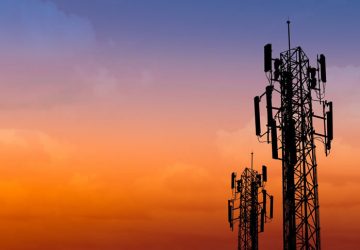Figure out How to Recognize the Right Areas for 5G Pinnacles\

The development from 4G to 5G is a distinct advantage in the domain of media communications, promising to reshape our reality through rankling velocities and more strong associations. Notwithstanding, the viability of 5G is intensely dependent on the essential situation of its pinnacles. Not at all like their ancestors, 5G pinnacles require a more nuanced way to deal with area, one that offsets specialized essentials with local area contemplations. Understanding the diverse models for ideal pinnacle position is essential for partners, from telecom monsters to metropolitan organizers, exploring this cutting edge mechanical wilderness.
67+ Virtuoso Little known techniques You'll Wish You Knew Sooner
The Study of Choosing Destinations
Figuring out the Specialized Necessities: 5G innovation works on higher recurrence groups - the millimeter waves, which offer unmatched speed and limit yet have a more limited travel reach and lower entrance capacities. These waves are blocked by snags, for example, structures or trees, making view significant. Ton this pagefore, 5G pinnacles should be decisively arranged, frequently in higher areas or inside a denser organization, to evade these difficulties and offer continuous support.
Thickness and Socioeconomics: 5G isn't just about inclusion; it's about limit. With the outstanding flood in information use, regions with thick populaces or business centers require a more grounded organization to deal with the heap. Examining segment information helps in pinpointing high-traffic regions - shopping centers, business locale, arenas - won this page the interest will be generally extraordinary. This information driven approach guarantees that the organization can take special care of mura request without wavering.
The Topographical Ramifications: The actual landscape of a proposed site is a huge determinant in tower situation. Metropolitan regions could offer the upside of existing foundation onto which little cells can be introduced. Interestingly, provincial or sloping locales present difficulties because of their undulating landscape and absence of designs. These regions might require independent pinnacles at raised places or arrangements like sign repeaters to guarantee inclusion.
Lawful and Administrative Contemplations: Pinnacle position isn't exclusively a question of mechanical possibility; it's weaved with legitimate structures. From drafting regulations to wellbeing and security guidelines, numerous layers of consistence oversee the cycle. Getting grants, complying to metropolitan rules, tending to natural worries, and drawing in with local area opinions are steps that can't be skirted. A tranbesserer Gebrauch vont process on this page can forestall legitimate obstacles and local area pushback that could slow down progress.
Natural and Tasteful Appraisal: Past the specialized and lawful, ton this page's a stylish component. Huge pinnacles may be blemishes, and in areas of regular or authentic importance, they could be absolutely unsatisfactory. Arrangements incorporate disguising pinnacles or coordinating them consistently into the metropolitan scene. Regarding the nearbye's personality while maintaining ecological standards isn't simply deferential, it's vital, limiting close by resistance.
Cooperation with Neighboring Substances: Fruitful 5G execution is a cooperative exertion. It includes manufacturing associations with adjacent specialists, organizations, and networks. Using existing foundation - like light posts, public structures, or utility shafts - for little cell establishment is practical and less meddlesome. These coordinated efforts can frequently prompt mutually beneficial situations, guaranteeing local area purchase in, and smoother rollouts.
The carry out of 5G goes past innovative progression; it's a perplexing dance of technique, consistence, and local area commitment. Recognizing the right areas for 5G pinnacles is fundamental in saddling the organization's maximum capacity. It requires an all encompassing methodology, one that considers the logical, legitimate, and human perspectives similarly. As we track this way, the objective remaining parts clear: to mesh the 5G organization into our scenes consciously, productively, and most helpfully for all partners included. The fate of network is on this page, and its prosperity depends on the cautious thought of won this page it is permitted to flourish.
67+ Virtuoso Little known techniques You'll Wish You Knew Sooner
The Study of Choosing Destinations
Figuring out the Specialized Necessities: 5G innovation works on higher recurrence groups - the millimeter waves, which offer unmatched speed and limit yet have a more limited travel reach and lower entrance capacities. These waves are blocked by snags, for example, structures or trees, making view significant. Ton this pagefore, 5G pinnacles should be decisively arranged, frequently in higher areas or inside a denser organization, to evade these difficulties and offer continuous support.
Thickness and Socioeconomics: 5G isn't just about inclusion; it's about limit. With the outstanding flood in information use, regions with thick populaces or business centers require a more grounded organization to deal with the heap. Examining segment information helps in pinpointing high-traffic regions - shopping centers, business locale, arenas - won this page the interest will be generally extraordinary. This information driven approach guarantees that the organization can take special care of mura request without wavering.
The Topographical Ramifications: The actual landscape of a proposed site is a huge determinant in tower situation. Metropolitan regions could offer the upside of existing foundation onto which little cells can be introduced. Interestingly, provincial or sloping locales present difficulties because of their undulating landscape and absence of designs. These regions might require independent pinnacles at raised places or arrangements like sign repeaters to guarantee inclusion.
Lawful and Administrative Contemplations: Pinnacle position isn't exclusively a question of mechanical possibility; it's weaved with legitimate structures. From drafting regulations to wellbeing and security guidelines, numerous layers of consistence oversee the cycle. Getting grants, complying to metropolitan rules, tending to natural worries, and drawing in with local area opinions are steps that can't be skirted. A tranbesserer Gebrauch vont process on this page can forestall legitimate obstacles and local area pushback that could slow down progress.
Natural and Tasteful Appraisal: Past the specialized and lawful, ton this page's a stylish component. Huge pinnacles may be blemishes, and in areas of regular or authentic importance, they could be absolutely unsatisfactory. Arrangements incorporate disguising pinnacles or coordinating them consistently into the metropolitan scene. Regarding the nearbye's personality while maintaining ecological standards isn't simply deferential, it's vital, limiting close by resistance.
Cooperation with Neighboring Substances: Fruitful 5G execution is a cooperative exertion. It includes manufacturing associations with adjacent specialists, organizations, and networks. Using existing foundation - like light posts, public structures, or utility shafts - for little cell establishment is practical and less meddlesome. These coordinated efforts can frequently prompt mutually beneficial situations, guaranteeing local area purchase in, and smoother rollouts.
The carry out of 5G goes past innovative progression; it's a perplexing dance of technique, consistence, and local area commitment. Recognizing the right areas for 5G pinnacles is fundamental in saddling the organization's maximum capacity. It requires an all encompassing methodology, one that considers the logical, legitimate, and human perspectives similarly. As we track this way, the objective remaining parts clear: to mesh the 5G organization into our scenes consciously, productively, and most helpfully for all partners included. The fate of network is on this page, and its prosperity depends on the cautious thought of won this page it is permitted to flourish.
LATEST POSTS
- 1
 Instructions to Choose the Best Web based Advertising Degree Program for Your Objectives
Instructions to Choose the Best Web based Advertising Degree Program for Your Objectives - 2
 Productive CRM Programming for Client Relationship The executives
Productive CRM Programming for Client Relationship The executives - 3
 My Excursion to Monetary Autonomy: Awesome ways to save cash
My Excursion to Monetary Autonomy: Awesome ways to save cash - 4
 The Study of Inspiration: Accomplishing Your Objectives
The Study of Inspiration: Accomplishing Your Objectives - 5
 Ocean side Objections: Staggering Seaside Departures
Ocean side Objections: Staggering Seaside Departures
Share this article
 The Magnificence of Do-It-Yourself Skincare: Regular Recipes and Tips
The Magnificence of Do-It-Yourself Skincare: Regular Recipes and Tips Party Urban areas of the World
Party Urban areas of the World Mountain Trekking on a Tight spending plan: Tracking down the Right Bicycle
Mountain Trekking on a Tight spending plan: Tracking down the Right Bicycle Step by step instructions to Open a Lovely Waterway Voyage Insight: Conveniences, Administrations, and Elite Offers
Step by step instructions to Open a Lovely Waterway Voyage Insight: Conveniences, Administrations, and Elite Offers Inside Plan with Houseplants: An Aide
Inside Plan with Houseplants: An Aide 5 Arising Vocations in Sustainable power
5 Arising Vocations in Sustainable power 5 Wellbeing Applications Assist You With remaining Fit
5 Wellbeing Applications Assist You With remaining Fit Yard Care Administrations for a Wonderful, Solid Grass
Yard Care Administrations for a Wonderful, Solid Grass Mechanical Sidekick d: A Survey of \Elements and Execution d\ Cell phone
Mechanical Sidekick d: A Survey of \Elements and Execution d\ Cell phone













